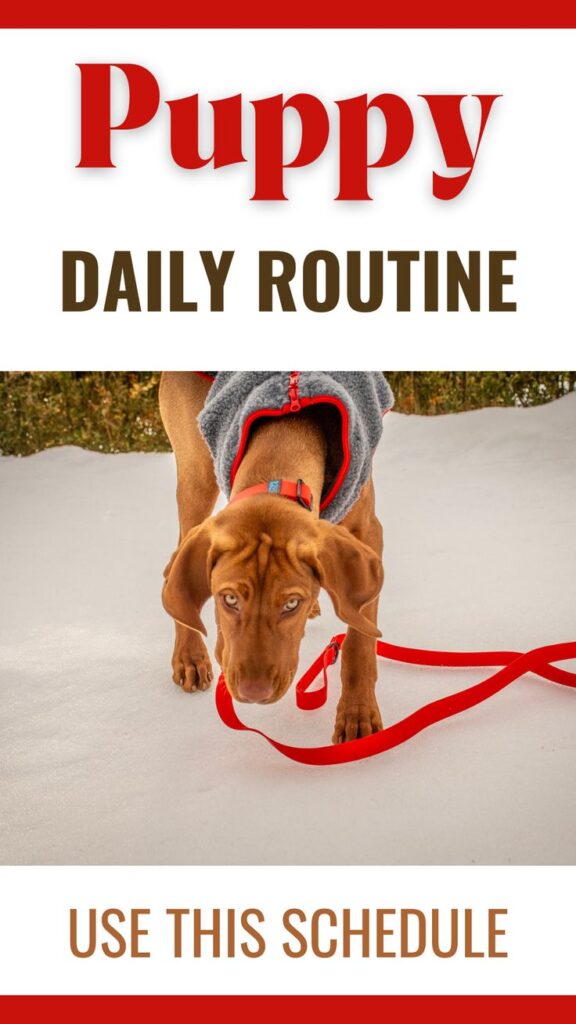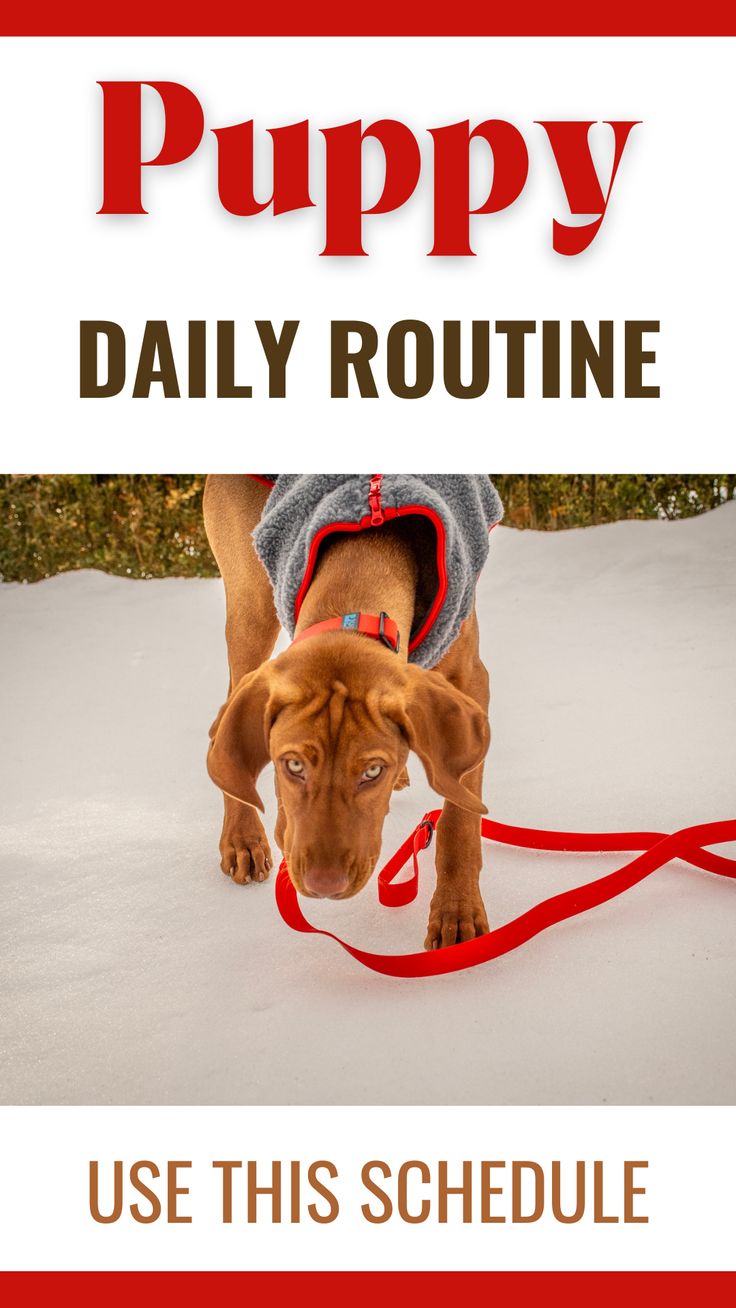Introduction

How to Build the Perfect Daily Routine for Your Dog: Creating a structured daily routine for your dog is one of the best things you can do to ensure their happiness, health, and overall well-being. Dogs thrive on consistency, and a well-planned daily schedule can reduce anxiety, improve behavior, and strengthen the bond between you and your furry friend. Whether you’re a new dog owner or looking to enhance your pet parenting game in 2025, this guide will walk you through everything you need to know.
Why Do Dogs Need a Routine?
Dogs are creatures of habit. Just like humans, they feel more secure and balanced when they know what to expect throughout the day. A consistent routine:
- Reduces stress and separation anxiety
- Supports house-training and behavioral conditioning
- Improves digestion and sleep patterns
- Enhances obedience and focus
Key Elements of a Dog’s Daily Routine
Let’s explore the essential components of a daily dog routine and how to tailor each aspect to your pet’s specific needs.
1. Morning Walk and Potty Break
Starting the day with a walk not only helps your dog relieve themselves but also kickstarts their metabolism and mental alertness.
- Time: 6:30 AM – 7:00 AM
- Activity: 20–30 min walk + potty time
- Benefits: Physical exercise, mental stimulation, bonding time
2. Morning Feeding Time
Feeding your dog after their morning walk helps establish routine and prevents digestive issues like bloating.
- Time: 7:30 AM
- Meal: Portion-controlled, balanced dog food
- Tip: Avoid feeding before walks to prevent stomach upset
3. Interactive Play or Training Session
A short 15–20 minute session of fetch or basic command training helps burn off energy and build obedience.
- Time: 8:00 AM – 8:30 AM
- Activities: Fetch, tug, puzzle toys, command training
4. Alone Time or Nap
While you’re at work or attending to other responsibilities, most dogs will rest if their physical and mental needs are met.
- Time: 9:00 AM – 12:00 PM
- Setup: Safe space, chew toys, crate or dog bed
Ideal Daily Routine Table
Here is a sample daily routine for a healthy adult dog:
| Time | Activity | Purpose |
|---|---|---|
| 6:30 AM | Morning Walk & Potty | Exercise and eliminate |
| 7:30 AM | Breakfast | Nutrition and energy |
| 8:00 AM | Play/Training | Mental stimulation |
| 9:00 AM–12:00 PM | Nap or Alone Time | Rest and relaxation |
| 12:00 PM | Quick Potty Break | Relief and movement |
| 12:30 PM | Short Walk or Tug Game | Midday activity |
| 1:00–4:00 PM | Rest/Nap | Energy recovery |
| 4:30 PM | Evening Walk | Physical exercise and socialization |
| 6:00 PM | Dinner | Nutrition and satiation |
| 7:00 PM | Calm Play or Cuddles | Bonding and wind-down |
| 9:00 PM | Final Potty Break | End-of-day relief |
| 9:30–10:00 PM | Sleep | Full night rest |
Adjusting for Age and Breed
Puppies
- Require 3–4 meals daily
- Frequent potty breaks every 1–2 hours
- Multiple short naps
- Socialization and basic training
Adult Dogs
- 2 meals daily
- 2–3 walks or play sessions
- At least 12–14 hours of rest
Senior Dogs
- Lower intensity exercise
- More frequent but shorter walks
- Gentle mental stimulation
High-Energy Breeds (e.g., Border Collie, Husky)
- Require more physical and mental stimulation
- Add extra training sessions or agility games
Low-Energy Breeds (e.g., Bulldog, Basset Hound)
- Prefer slow-paced walks
- Enjoy cuddles and short playtimes
Tips to Stick to the Routine
1. Set Reminders
Use alarms, calendars, or dog-care apps to keep you on track.
2. Be Consistent
Try to stick to similar timing daily, even on weekends.
3. Adjust as Needed
If your schedule changes, slowly shift your dog’s routine over a few days.
4. Use Positive Reinforcement
Reward your dog with praise or treats to encourage desired behaviors.
Common Mistakes to Avoid
- Feeding at inconsistent times: Leads to digestive and behavioral issues.
- Too little or too much exercise: Can cause restlessness or joint pain.
- Lack of mental stimulation: Results in destructive behaviors.
- Ignoring age-specific needs: Puppies and senior dogs have different requirements.
Mental Enrichment Ideas
Mental stimulation is just as important as physical exercise. Here are some ways to engage your dog’s mind:
- Puzzle feeders
- Hide-and-seek games
- Scent training
- Obedience drills
- Interactive toys (KONG, treat balls)
Weekend Routine Tweaks
While keeping the routine consistent is key, weekends can offer extra bonding time. You can:
- Take your dog on a longer hike or trail
- Visit a dog park
- Teach a new trick
- Include family members in playtime
Signs Your Routine Is Working
Your dog will:
- Eat and sleep on time
- Show fewer behavioral issues
- Be more relaxed and obedient
- Maintain a healthy weight
When to Consult a Vet or Trainer
If your dog:
- Shows signs of anxiety despite a routine
- Has trouble sleeping or eating
- Displays aggressive behavior
- Isn’t improving with training
Then it’s time to consult a professional for support.
Frequently Asked Questions
Q1. How long should I walk my dog daily?
A: Most dogs need 30–60 minutes, depending on breed and age.
Q2. Can I change my dog’s routine?
A: Yes, but changes should be gradual to avoid stress.
Q3. What if I work long hours?
A: Consider hiring a dog walker or using a dog daycare.
Q4. Should feeding be before or after walks?
A: Feed after walks to avoid digestive problems, especially for large breeds.
Conclusion
Creating the perfect daily routine for your dog isn’t about rigid schedules—it’s about consistency, care, and understanding your dog’s unique needs. A well-balanced routine leads to a healthier, happier, and more obedient dog. Remember, your dog depends on you for structure and stability. Start building a thoughtful routine today and enjoy a stronger bond with your canine companion.
